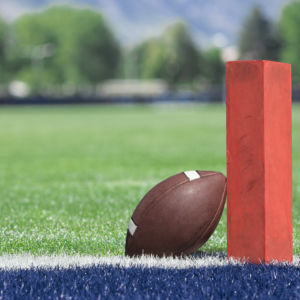Over the last couple of years, it’s been difficult to miss the headlines raising questions about the safety of synthetic turf athletic fields. Local officials with the responsibility of making decisions about athletic fields on behalf of a community have an array of sources to guide their choices, but still find themselves fraught with uncertainty because of seemingly conflicting information, or fears about unknowns. Media reports have left parents and local decision-makers confused and adrift, forcing them to do their own research and evaluate the existing science.
Furthermore, the federal government, via the Environmental Protection Agency, the Centers for Disease Control and the Consumer Product Safety Commission, is in the midst of its own study. But this research is taking longer than expected, and it has become apparent that these bodies are not planning to use natural soil as a comparison for the results of their studies. Such a comparison is important to provide context for the results and help the general public to understand their relevance.
That’s why my colleagues and I recently completed an in-depth study of the safety of recycled rubber infill and how it compares to the alternative, natural soil. This took the form of a risk assessment of the chemicals present in recycled rubber infill across many different exposure pathways and comparing these findings to the chemicals present in natural soil.
We evaluated all available North American data on the chemical composition of recycled rubber, as well as air sampling data collected on or near synthetic turf fields. For this research, we focused on real-life exposure scenarios, including ingestion, skin contact and inhalation pathways to account for a variety of people and activities. When talking about risk, this is what counts: how the product will be experienced in everyday life.
Our research team consisted of scientists and experts with advanced degrees in public health, environmental management, and with board certifications in toxicology. Our research was published in the journal Environmental Research and was subject to a rigorous peer-review process. That means it was evaluated by other scientists, from different organizations, and they concluded that the assessment used appropriate scientific methods and interpreted the results properly.
What we found, in a nutshell, is that there is no elevated public health risk from playing on recycled rubber compared to playing on natural soil. The risks from all potentially harmful chemicals that may be present in recycled rubber fields were below EPA guidelines, and in fact — in most scenarios — risks were actually higher for natural soil fields than for synthetic turf fields. This is because many of the same chemicals found in synthetic turf — arsenic, lead and polycyclic aromatic hydrocarbons — are also found at similar or higher levels in natural soil. That’s why context and real-life exposure scenarios matter.
Our study joins nearly 100 other studies looking at this issue, including peer-reviewed analyses and government reports, that did not find evidence supporting health concerns from chemical exposures.
Notably, in the last year and a half, a series of additional scientific findings have been released, including a Washington Department of Health analysis that investigated whether the incidence of cancer was higher on a list of soccer players who had played on synthetic turf than expected — the analysis found that rates were actually lower than expected based on this list.
We’ve also seen overseas regulatory bodies, such as the Dutch National Institute for Public Health and the Environment and the European Chemicals Agency, conducting their own tests of recycled rubber and the results aligned with the numerous other studies that have been conducted. The Dutch National Institute for Public Health went as far as to call these fields “safe.”
If you find yourself in a situation that requires you to evaluate the safety risks of synthetic turf athletic fields, we hope that you will consider these new studies in your decision.

